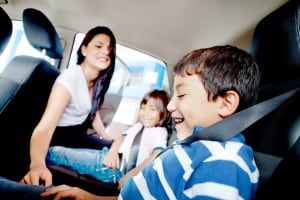 When we hear about a child killed by a drunk driver, we tend to think of the drunk driver and the child in separate cars. But according to a study recently published in Pediatrics, more than half of children killed in drunk driving-related car crashes are riding in the same car as the drunk driver.
When we hear about a child killed by a drunk driver, we tend to think of the drunk driver and the child in separate cars. But according to a study recently published in Pediatrics, more than half of children killed in drunk driving-related car crashes are riding in the same car as the drunk driver.
To conduct the study, lead author Dr. Kyran Quinlan and his colleagues analyzed data from the National Highway Traffic Safety Administration (NHTSA). Researchers found that 2,344 children under the age of 15 were killed in drunk driving-related crashes between 2001 and 2010. Even more shocking, 65% were riding with the drunk driver.
Researchers also found that one-third of the drunk drivers were driving without a valid driver’s license at the time of the crash and nearly two-thirds of children riding with drunk drivers were not wearing seatbelts at the time of the crash.
While the NHTSA’s data did show that the number of child passengers killed while riding with a drunk driver decreased by 41% over the 10-year period, the fact remains that drunk driving is a major threat to child passengers, especially when those child passengers are riding in the same car as a drunk driver. But a look at how the rate of children dying in car crashes while riding with drunk drivers varies by state could be the key to reducing drunk driving-related child passenger fatalities.
According to the study, South Dakota, New Mexico, and Mississippi had the highest rates of children dying while riding with a drunk driver while Massachusetts, New York, and New Jersey had the lowest. Those last three states all have DUI child endangerment laws while South Dakota and New Mexico are two of only four states without such a law, according to Mothers Against Drunk Driving (MADD).
The study’s authors hope that states will consider enacting or strengthening their drunk driving laws after looking at the results of the study. In response to the study, MADD also encourages all states to require ignition interlocks for all convicted DUI offenders and to enact DUI child endangerment laws that make driving drunk with a child passenger a felony. Both provisions could reduce drunk driving and protect children from drunk drivers.
